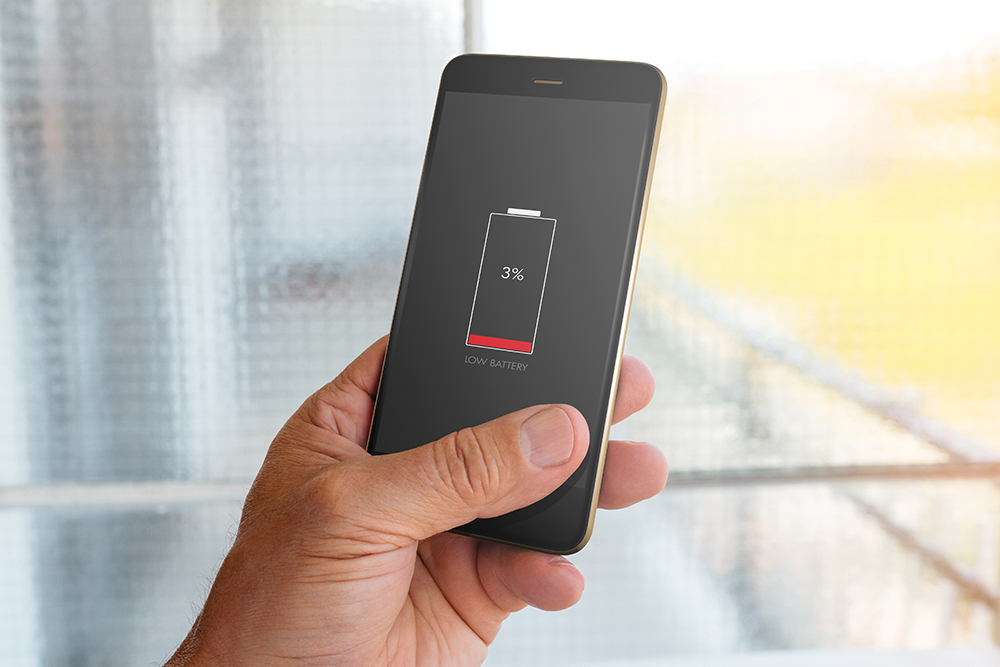Scientists have created a new type of carbon that could make the batteries in our phones, tablet computers and laptops safer, more powerful, quicker to charge and longer lasting.
An international team of researchers, led by Lancaster University and Jilin University in China, have announced the first organically synthesised porous carbon, called OSPC-1, in the journal Angewandte Chemie.
This new carbon shows exceptional potential as a material for anodes within lithium-ion batteries – the type of batteries that power millions of devices such as mobile phones, laptops, power tools, as well as being used in larger complex situations, such as space satellites, commercial airplanes and electric cars.
The industry standard material used for anodes within lithium-ion batteries is a form of carbon called graphite. The scientists compared the performance of OSPC-1 against graphite and discovered that OSPC-1 is able to store more than twice as many lithium ions, and therefore power, as graphite at the same mid-range speed of charging.
In addition, OSPC-1 is able to store lithium ions at more than double the rate as graphite – meaning charging speeds can be twice as fast. Discharge speeds can also be vastly improved with OSPC-1, which means it can also be used to power more energy-hungry applications.
Uniquely, OSPC-1 has been created at the molecular level using a complex technique called ‘Eglinton homocoupling’. This involves removing silicon from carbon-silicon groups to produce carbon to carbon links. The resulting structure is amorphous, very stable, and, crucially, highly conductive.
Another major advantage of OSPC-1 is its safety. It does not form dendrites. These are lithium metal fibres that can form when lithium gets stuck on the surface of graphite. If the dendrites build up and reach across to the cathode they can short circuit lithium-ion batteries and cause them to explode into flames.
OSPC-1 also appears to be much more longer-lasting than graphite. The team of scientists tested it over 100 charging and discharging cycles and there were no signs of deterioration. Graphite expands and contracts each time it is charged and discharged, which makes it susceptible to cracking. The open-framework structure of OSPC-1 means it is less brittle and not as prone to these weaknesses.
However, graphite is the industry standard because it is very cheap to produce and easily obtainable. The researchers acknowledge that OSPC-1 would be more costly to produce, at least initially. Therefore, the researchers believe the most likely early applications would be for situations where safety is the paramount consideration – such as within space satellites and aircraft.
Dr Abbie Trewin of Lancaster University, co-lead author of the study, said: “Our team has used an entirely new method to produce the only porous carbon designed at the molecular level.
“This new material, OSPC-1, is a highly promising anode material for lithium-ion batteries with a high lithium capacity, an impressive charge and discharge rate capability, potential for a long lifespan, and for significantly improved safety performance.
“We believe OSPC-1 has great potential in those situations where failure could lead to loss of life, or the loss of very expensive equipment in the case of satellites.”
The method used by the team of researchers has potential to be extended to other 3D carbon materials, and could see the creation of a new family of porous carbon materials, which could see benefits for energy storage, electronic devices, catalysis, gas storage, and gas separation technologies.
The research benefitted from funding from the Royal Society, the Engineering and Physical Sciences Research Council in the UK, the National Natural Science Foundation of China.
The researchers are Abbie Trewin, Colin Lambert, Pierre Fayon, Patrick Heasman, Michael Jay and Steven Bailey from Lancaster University; Teng Ben, Ziqiang Zhao, Saikat Das, Guolong Xing and Shlun Qiu of Jilin University; Hiroki Yamada and Toru Wakihara from the University of Tokyo; and Valentin Valtchev of the Universite de Caen-ENSICAEN-CNRS.











